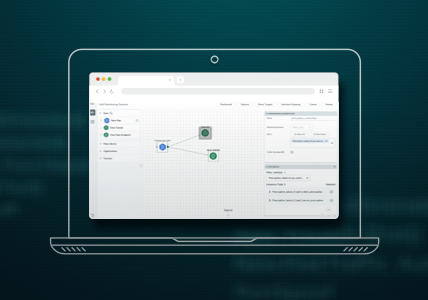Helping CMOs Maximize ROI During a Down Economy
A version of this article was published on Forbes Communication Council.
With today’s economic turmoil and overall down economy, businesses are forced to rethink their approach to marketing. Often, the initial response involves budget cuts, yet this isn’t a one-and-done scenario. The chief marketing officer (CMO) and executive teams must carefully weigh the benefits and challenges associated with any budget reduction to ensure the business continues to invest in areas that support long-term success.
Though there are many ways to maximize a marketing budget’s return, here are five tips that I’ve used to help navigate these challenging times.
1. Prioritize the Brand
Brand awareness is a vital component of a company’s long-term success, yet it is often the first cut when marketing budgets are tight because the immediate ROI isn’t as apparent. This is an example of short-term thinking with long-term implications. It’s important to ensure your product continues to be top-of-mind for potential buyers to support overall company success.
Although justifying brand spend can be challenging because it doesn’t directly tie to the bottom line, marketers can look to return on objectives (ROO) as a way to target and track the outcomes of brand awareness-focused programs.
For example, our team leveraged humor as a means to elevate the Gigamon brand during a turbulent economy. Our campaigns — including one titled “Don’t get caught with your pants down” — help key stakeholders understand how Gigamon eliminates security blind spots by supercharging organizations’ cloud, security, and observability tools with network-derived intelligence.
The campaign achieved significant success, garnering a total of 10.2 million views between April 1, 2022, and March 31, 2023. The 32-second variant became the most popular, with 3.6 million views and an average view duration of 30 seconds. The Pants Down video served as a core anchor element for the campaign landing page, which attracted almost 250,000 visits during the same time frame. This proved that the campaign successfully captured the interest of IT security leaders, driving them to seek additional information on Gigamon offerings.
Ultimately, when marketing spend is down in an industry, the companies who manage to maintain or increase their brand investment will build the company’s overall mindshare and likely come out stronger than those who do not. For context, as a result of Gigamon continuing to focus on building brand awareness, the company has earned the #1 market share at 71 percent for the deep observability category.
2. Focus on Product-Led Growth
Product-led growth (PLG) is a methodology where “user acquisition, expansion, conversion, and retention are all driven primarily by the product.” A product that sells itself is every marketer’s dream. In fact, PLG companies are more than twice as likely to experience rapid growth.
Although it requires an initial investment, it’s product-related, which may be easier to justify than marketing spend when budgets are tight.
Some examples of implementing a PLG strategy into overall marketing efforts include launching a free trial, enabling a freemium model, or adding something to the product that will create a network effect where the product becomes more valuable with more users that leverage it.
3. Employ Word-of-Mouth Strategies
Word of mouth is one of the most effective marketing strategies. Did you know that 84 percent of buyers start their purchasing process with a referral, and 91 percent of B2B buyers are influenced by word-of-mouth marketing?
During the pandemic, buyers began to rely more heavily on peers and community forums to evaluate potential offerings. This proved the need to invest in word-of-mouth programs, such as establishing a community forum or incentivizing customer participation in peer review sites, that could positively impact the buyer’s journey without requiring a huge investment.
Although these positive interactions with peers are essential, it is also important to include other trusted word-of-mouth sources in any program, including industry-specific analysts and influencers.
4. Utilize Existing Relationships
Tapping into relationships you’ve already built is an extension of word-of-mouth marketing, and both customer and partner relationships are important in this regard.
A buyer moves from awareness to interest to decision and then to action, so it’s not surprising that cross-selling or upselling to existing customers is far more cost-effective than selling to a new customer. In fact, the probability of selling to an existing customer is 60 to 70 percent, compared to 5 to 20 percent when selling to a new prospect.
While it is still necessary to gain new customers to build market share, that option can be limited during an economic downturn. This is where partners come in — specifically, leveraging their relationships with new buyers. For example, you might establish an incentive program for partners to find joint opportunities in their existing customer base, where targeted accounts are new to your organization.
5. Fail Fast
Leveraging an agile marketing approach makes sense most of the time, but it is even more imperative in turbulent marketing conditions. What may have once resonated with buyers, even relatively recently, may no longer apply when a market is in turmoil.
So try something new, fail fast, learn quickly, and repeat.
Long-Term Thinking = Long-Term Success
Doing more with less is incredibly complicated; it requires strategic thinking that prioritizes investing for the long term. As such, marketers must do their due diligence to ensure the right strategies are in place to support the future success of the business.
Following the five tips above can help you get the biggest return from your marketing investment so your team, your company, and your customers can succeed during these challenging economic times.
To learn more about how to manage a marketing mix during economic downturns and how to leverage marketing lessons from the pandemic, listen to my interview on the TOP CMO podcast.
Featured Webinars
Hear from our experts on the latest trends and best practices to optimize your network visibility and analysis.

CONTINUE THE DISCUSSION
People are talking about this in the Gigamon Community’s Hybrid/Public Cloud group.
Share your thoughts today










